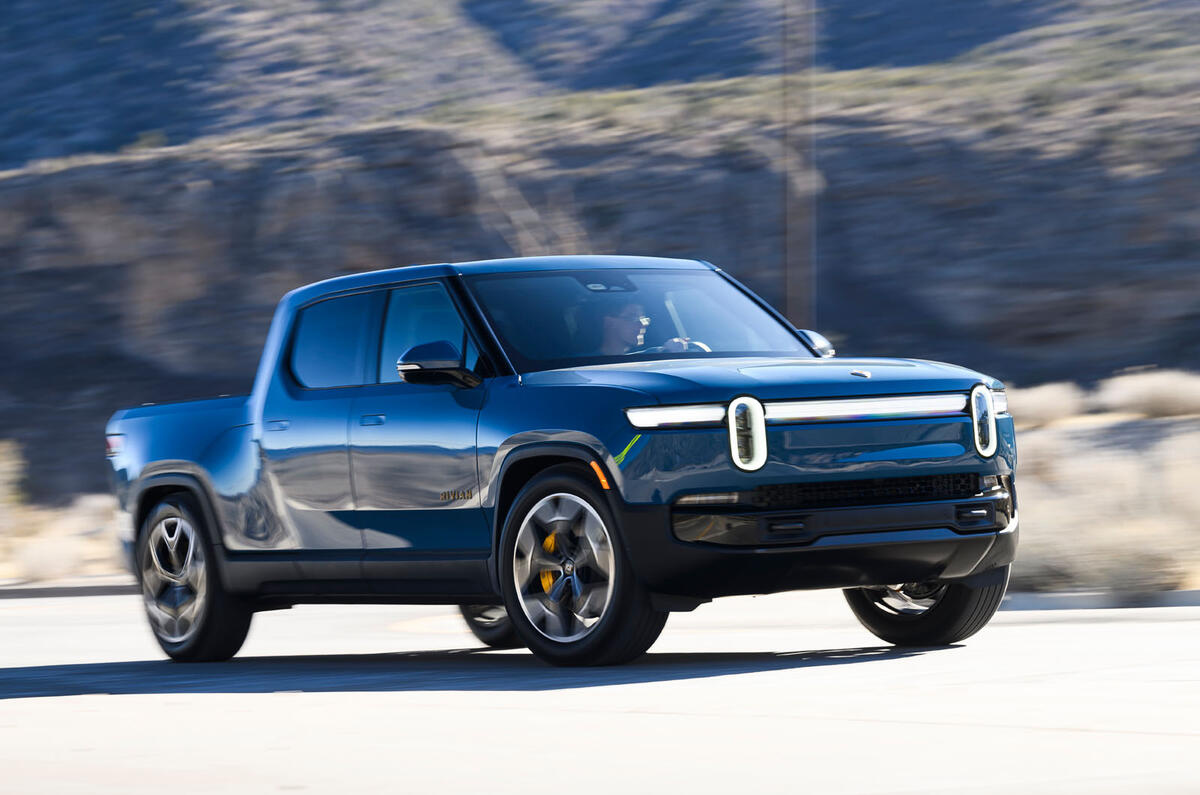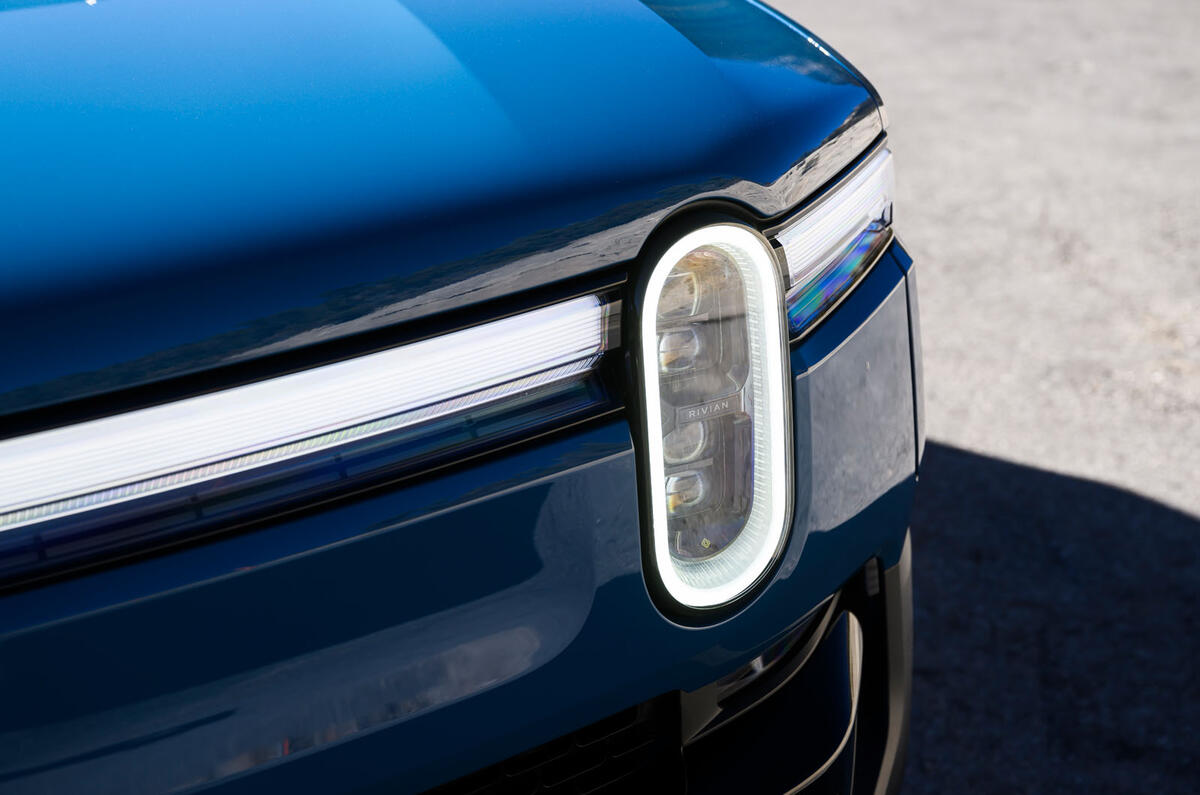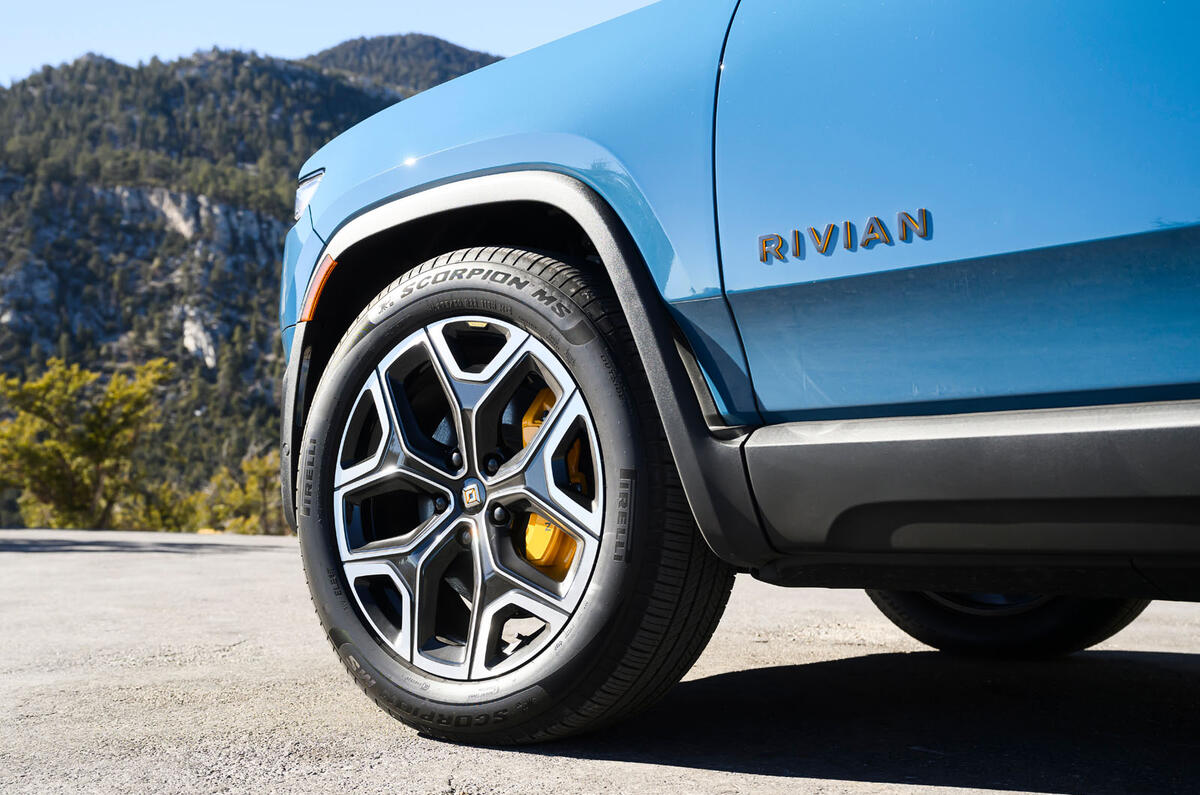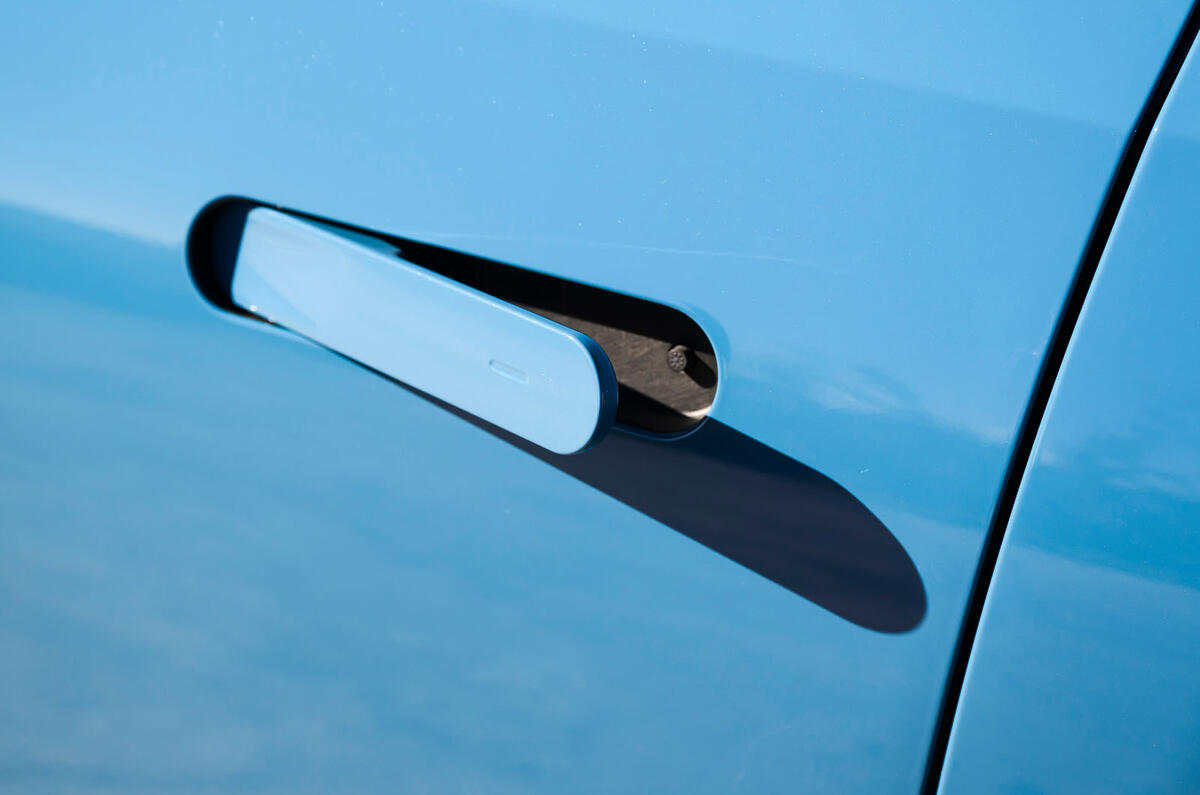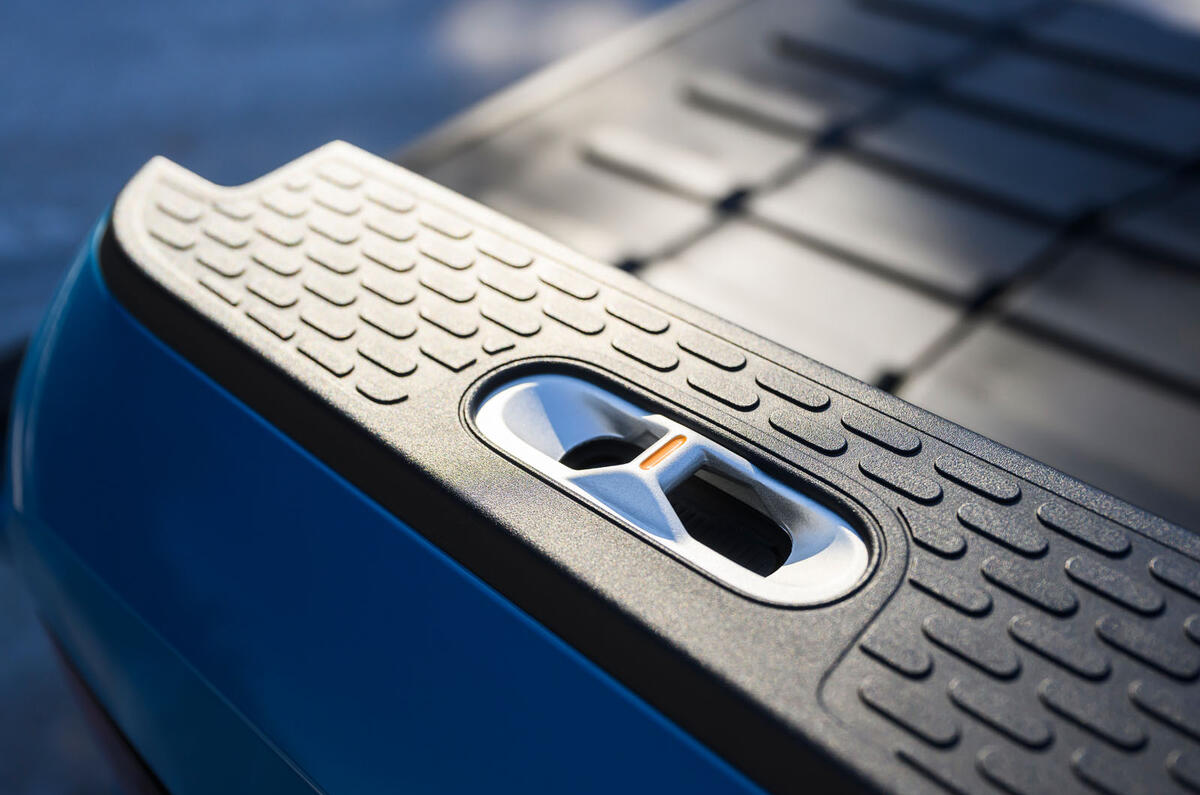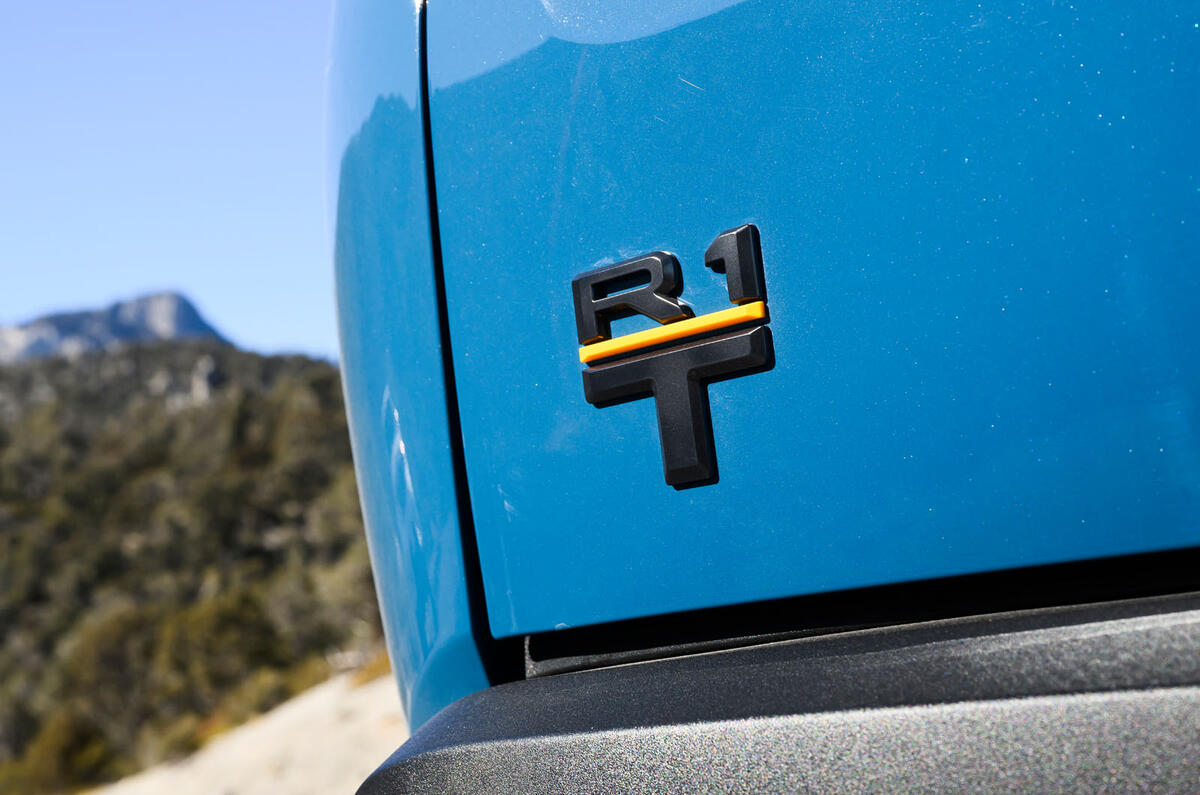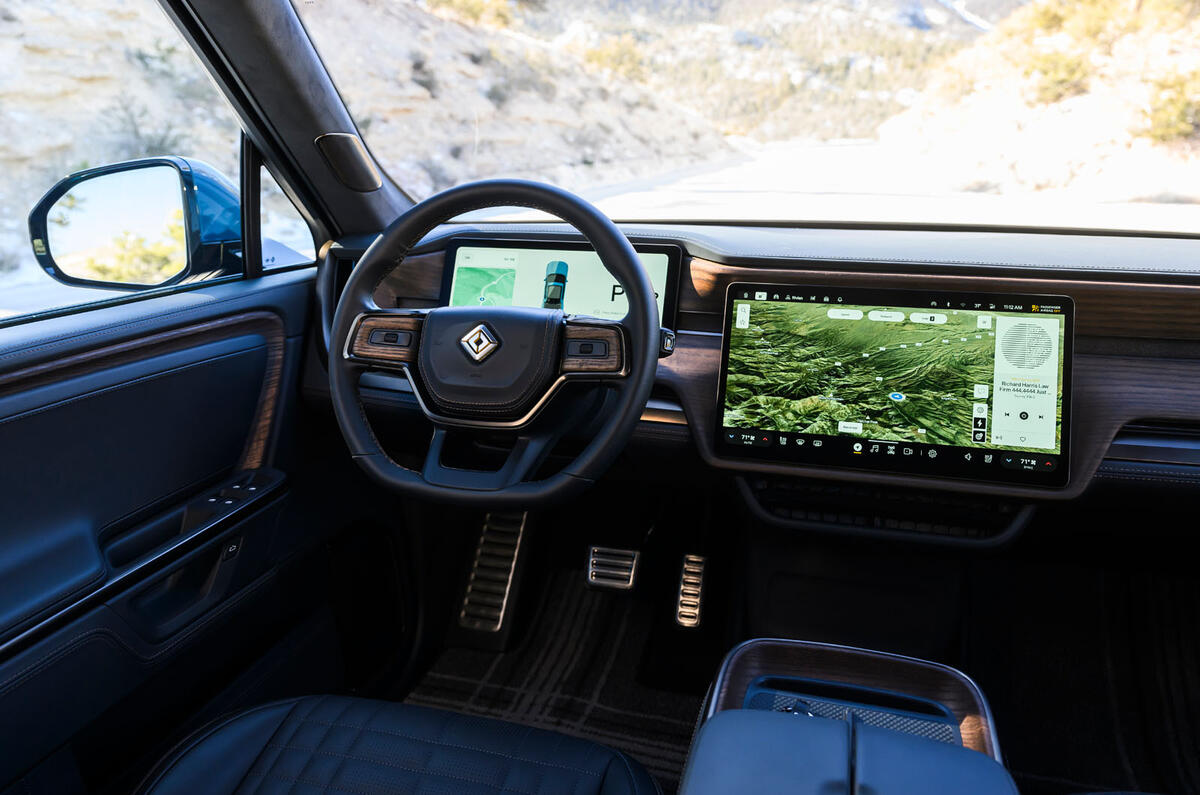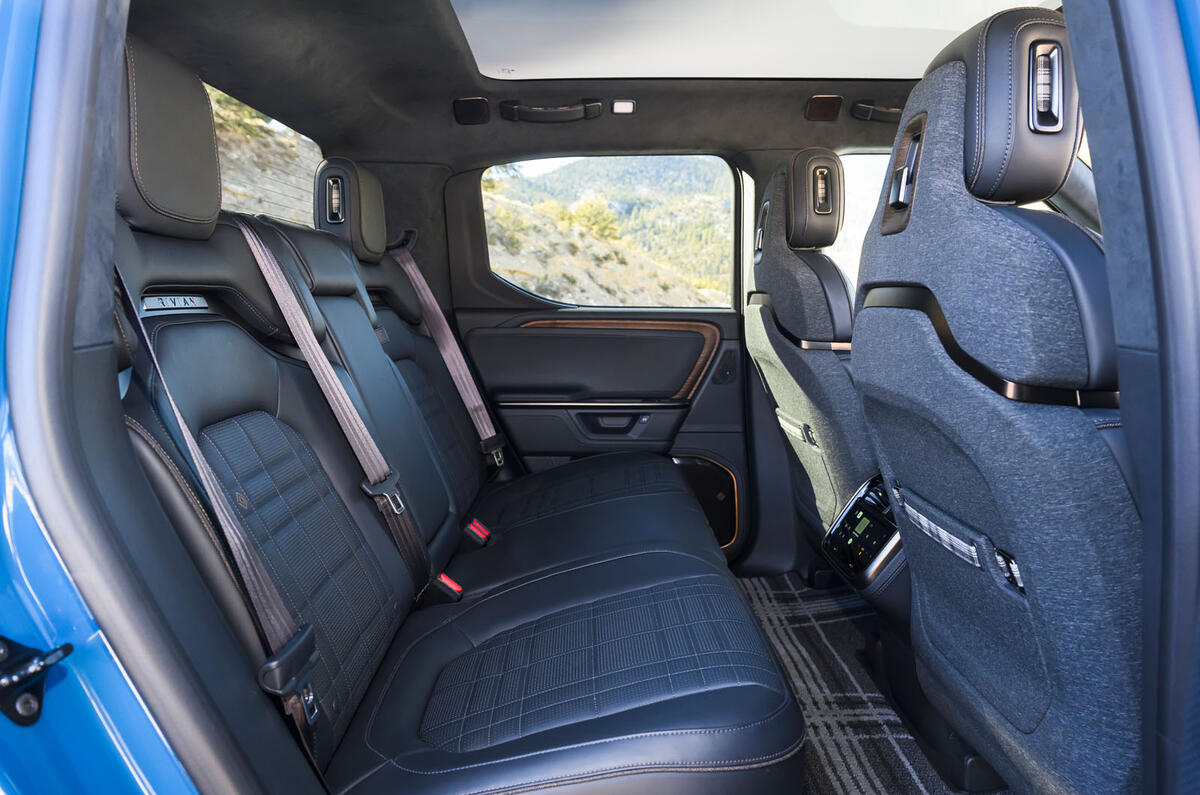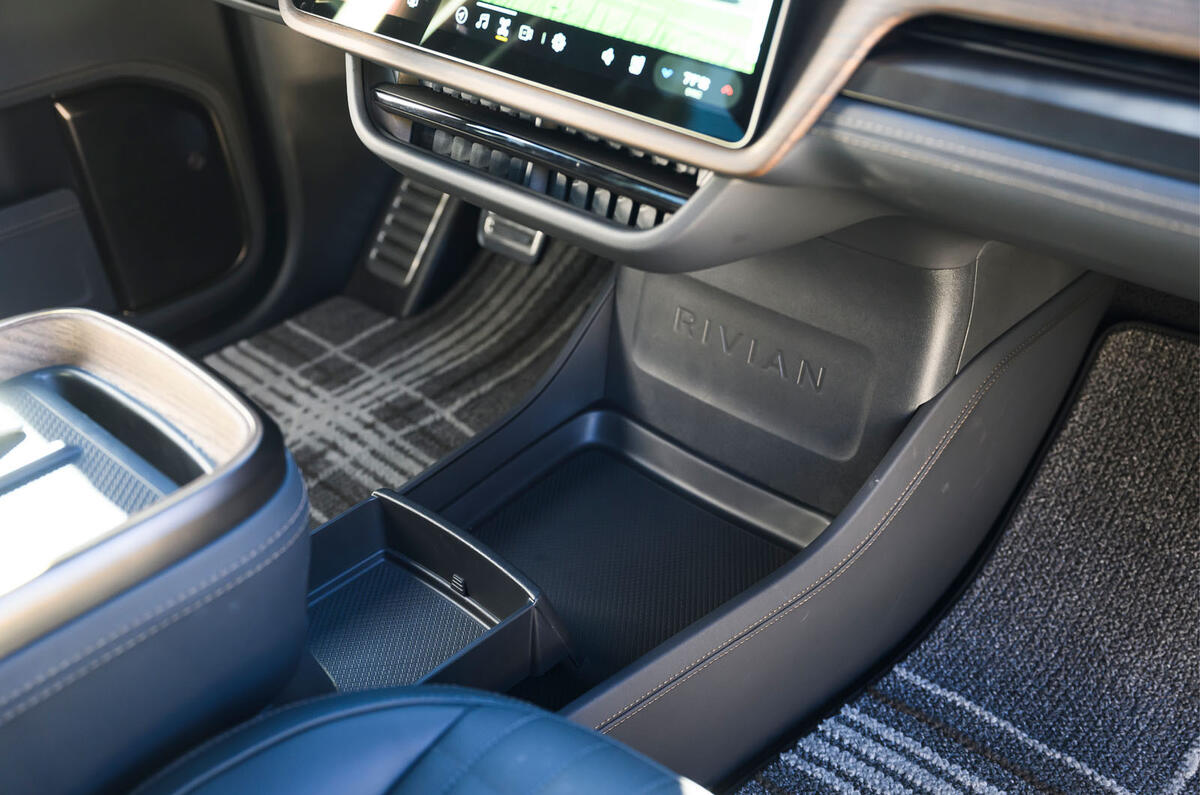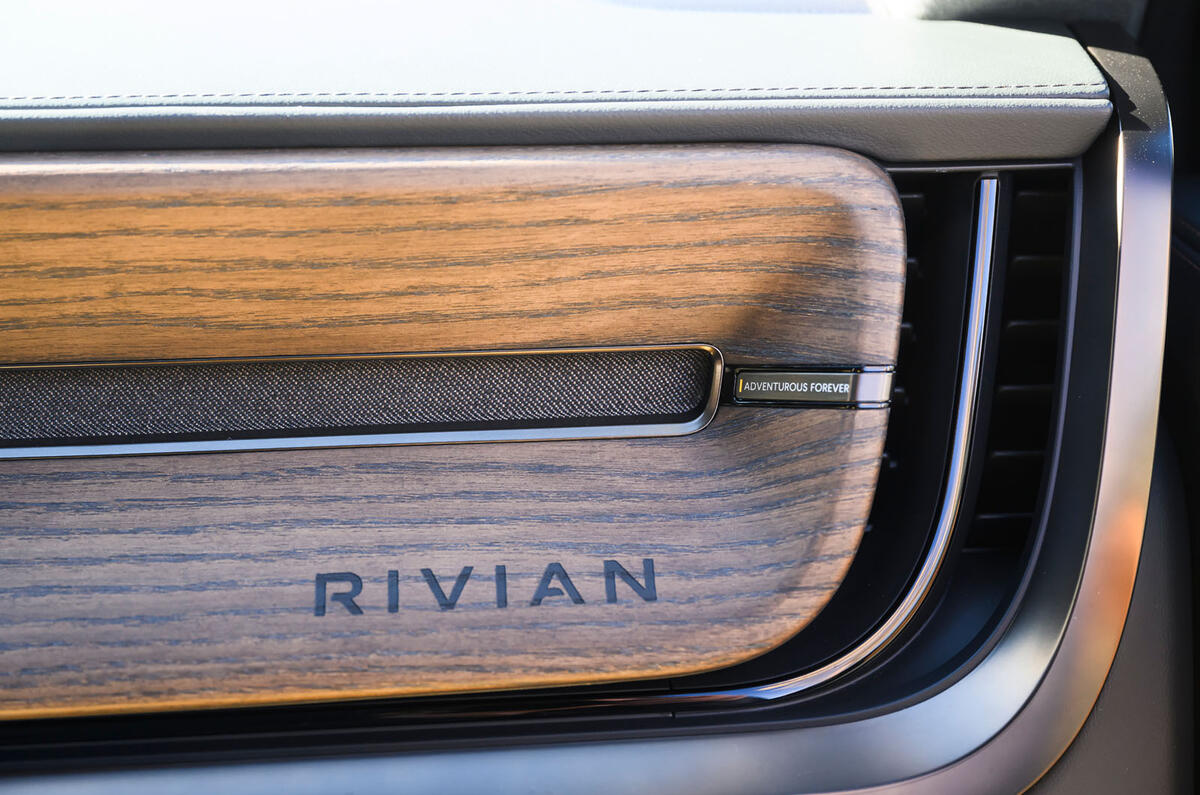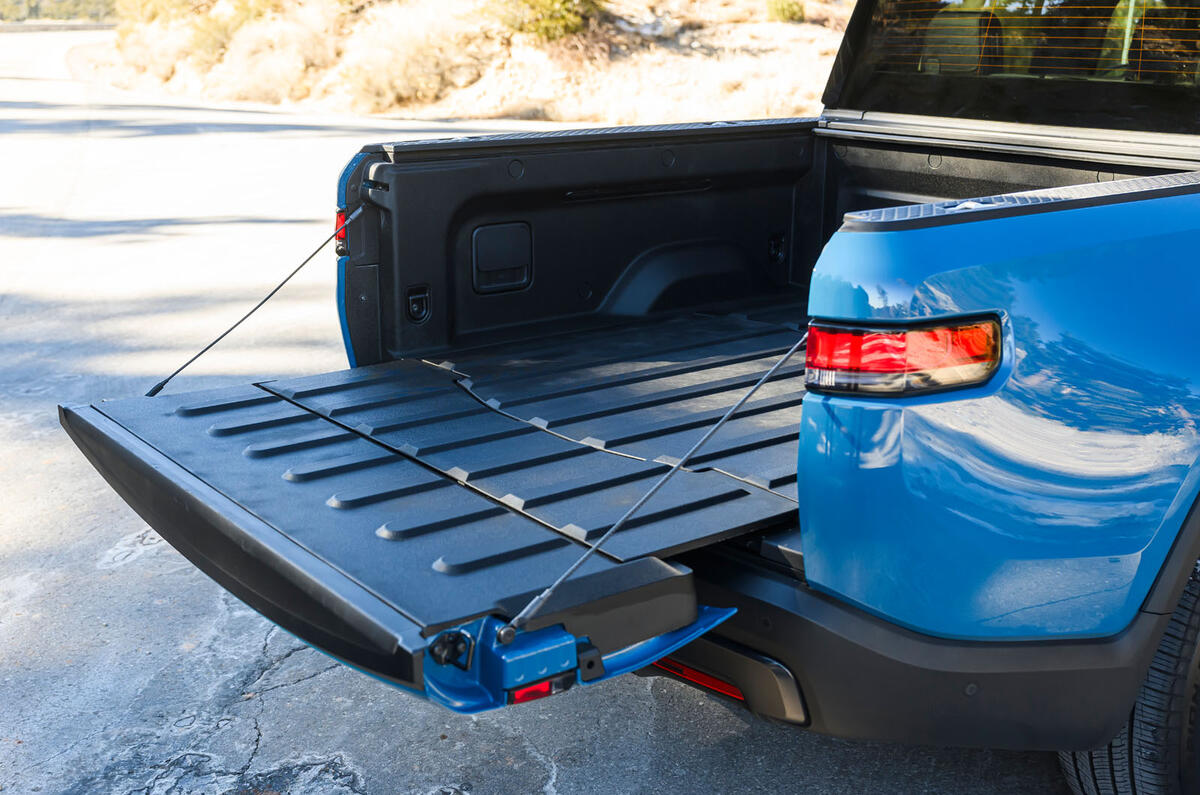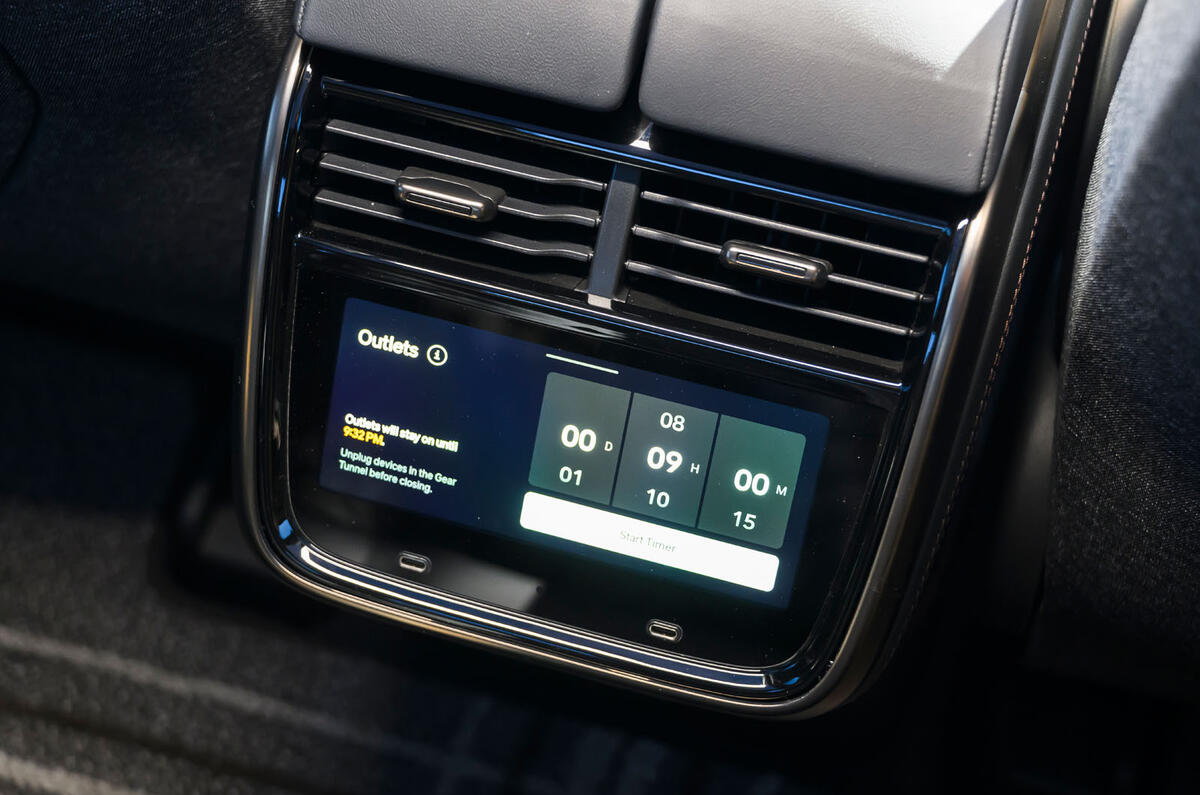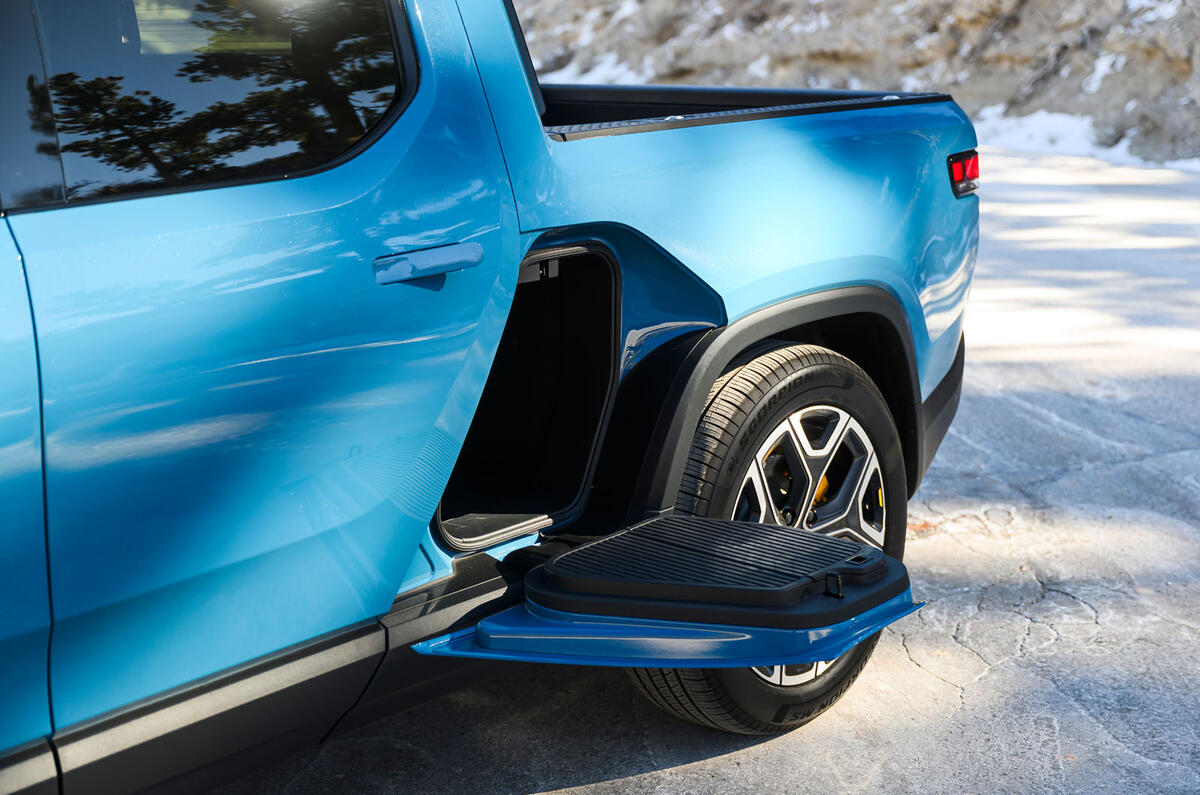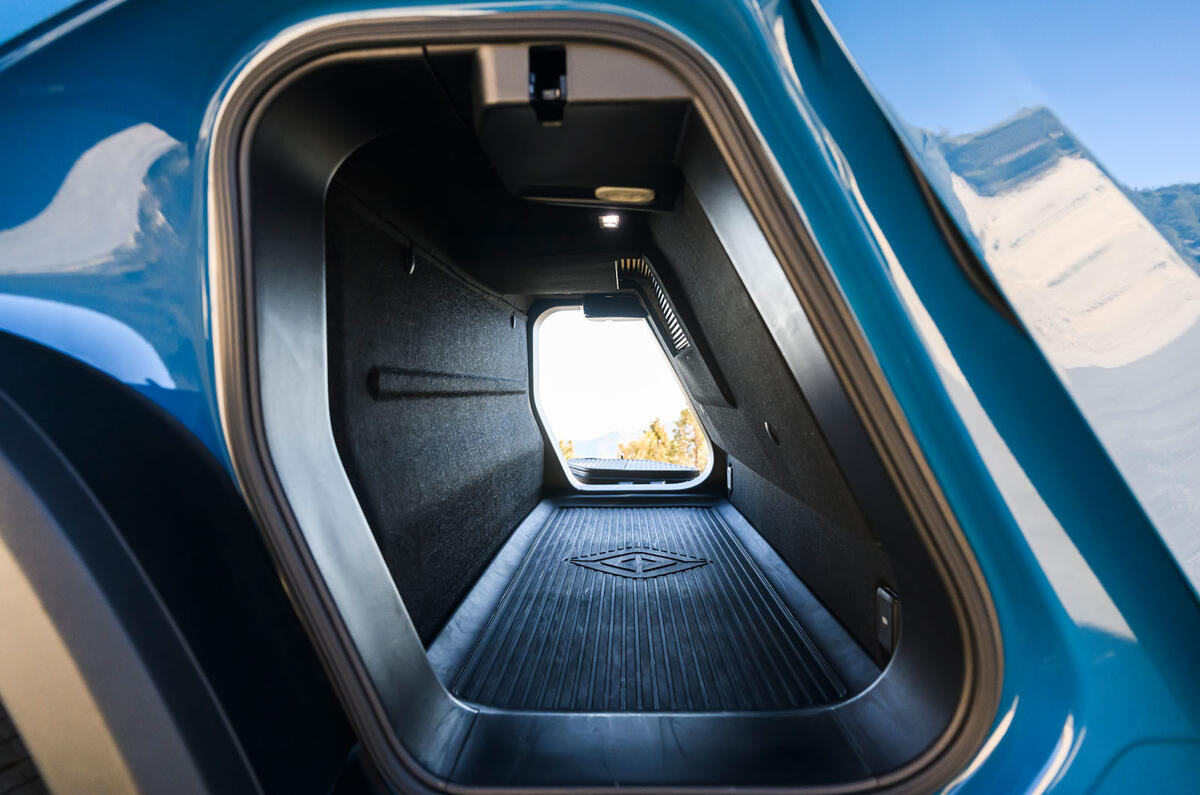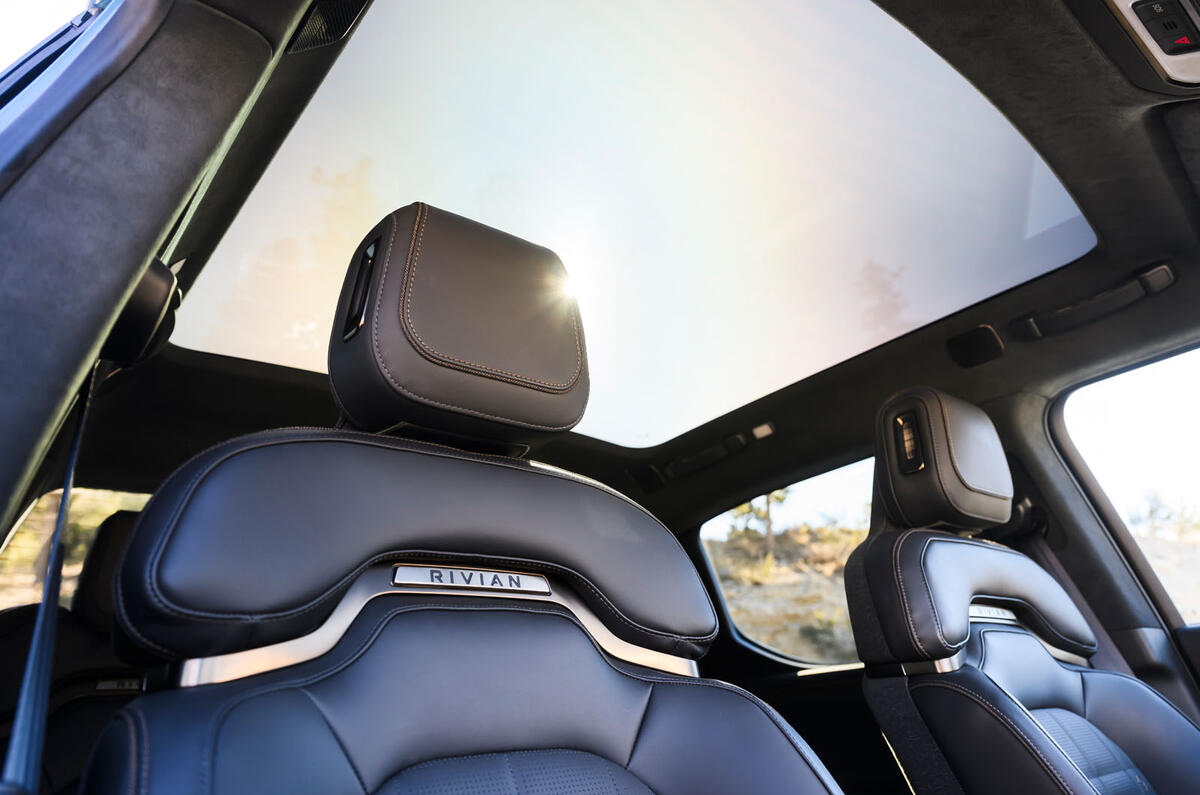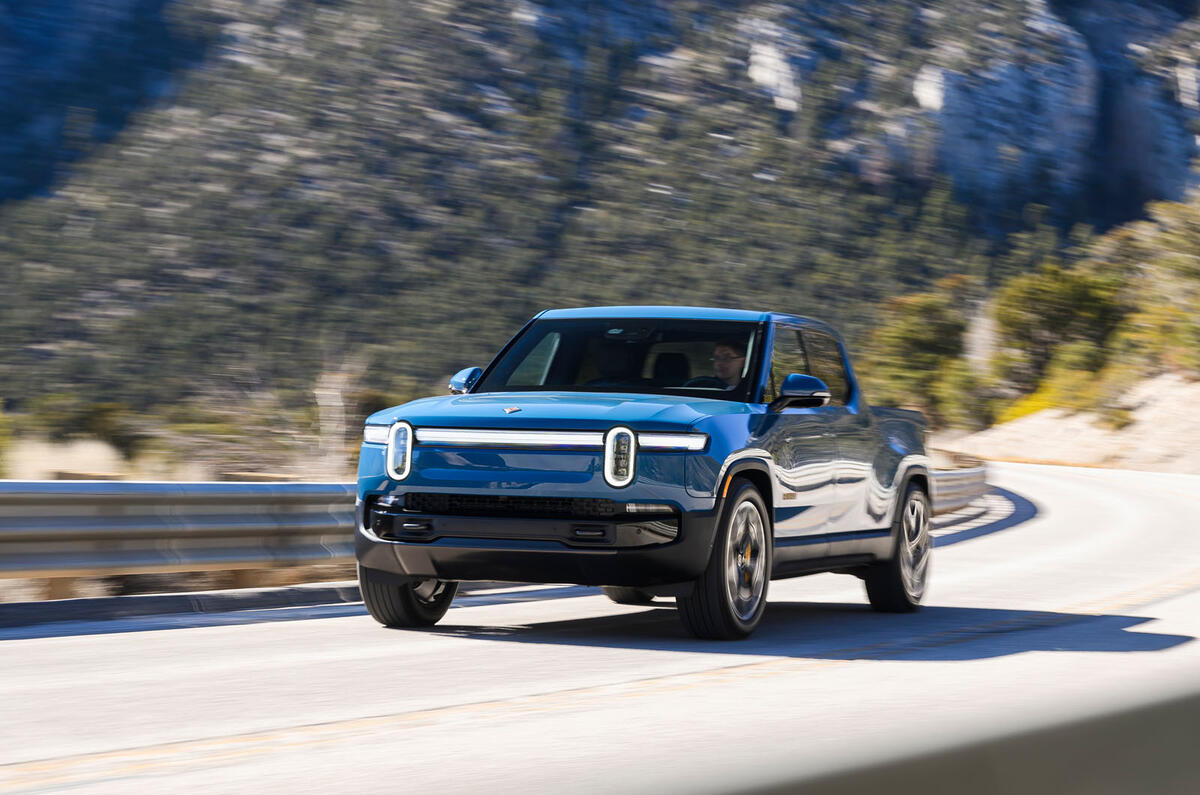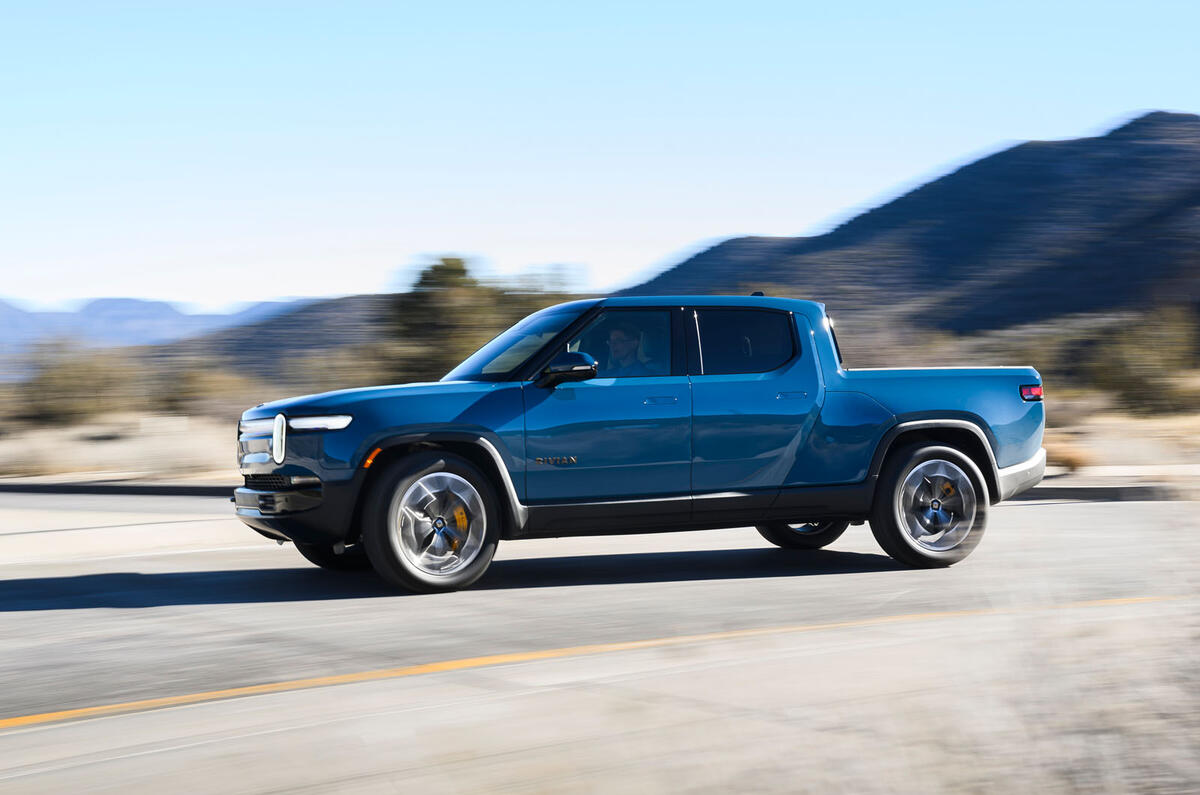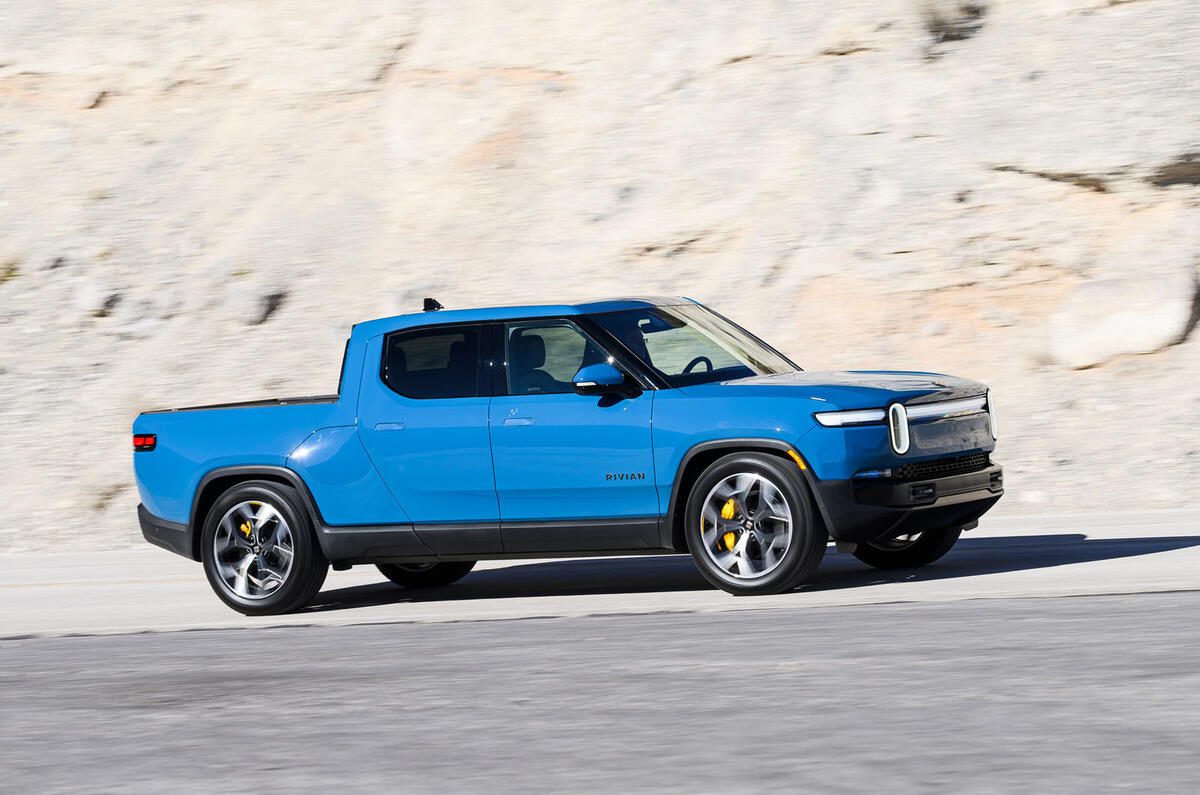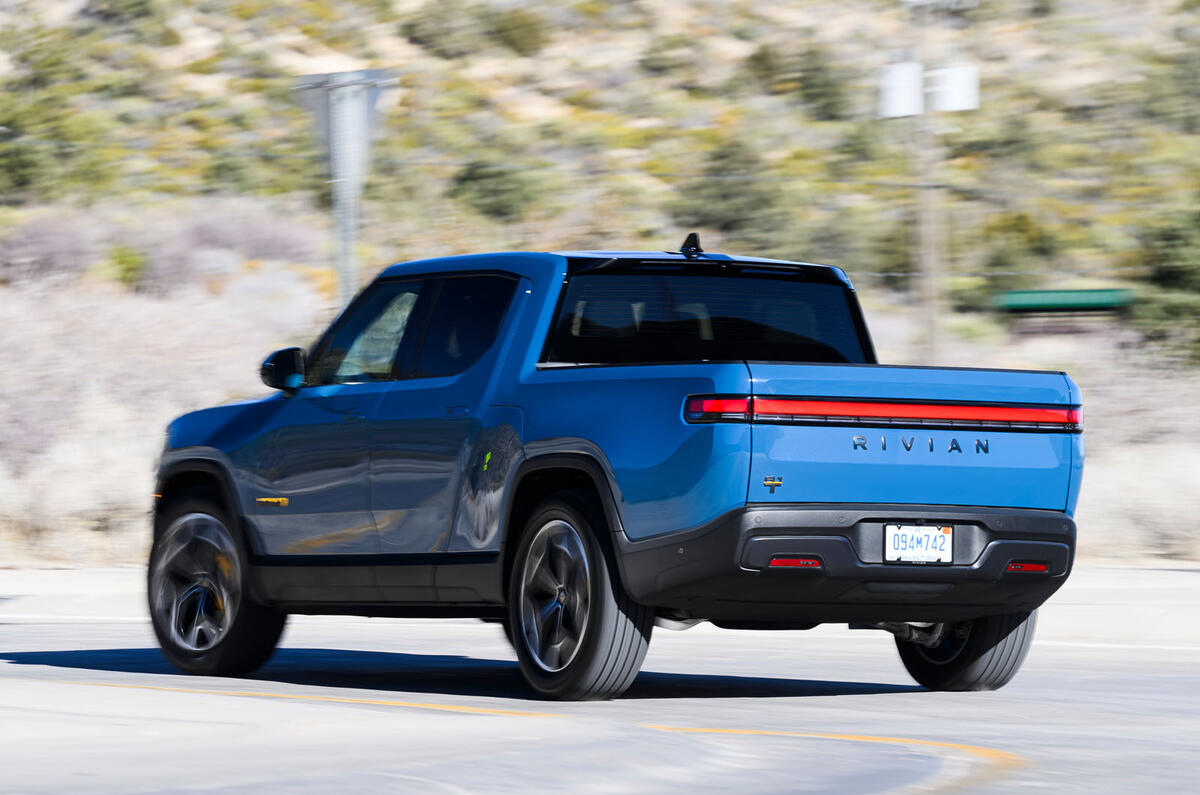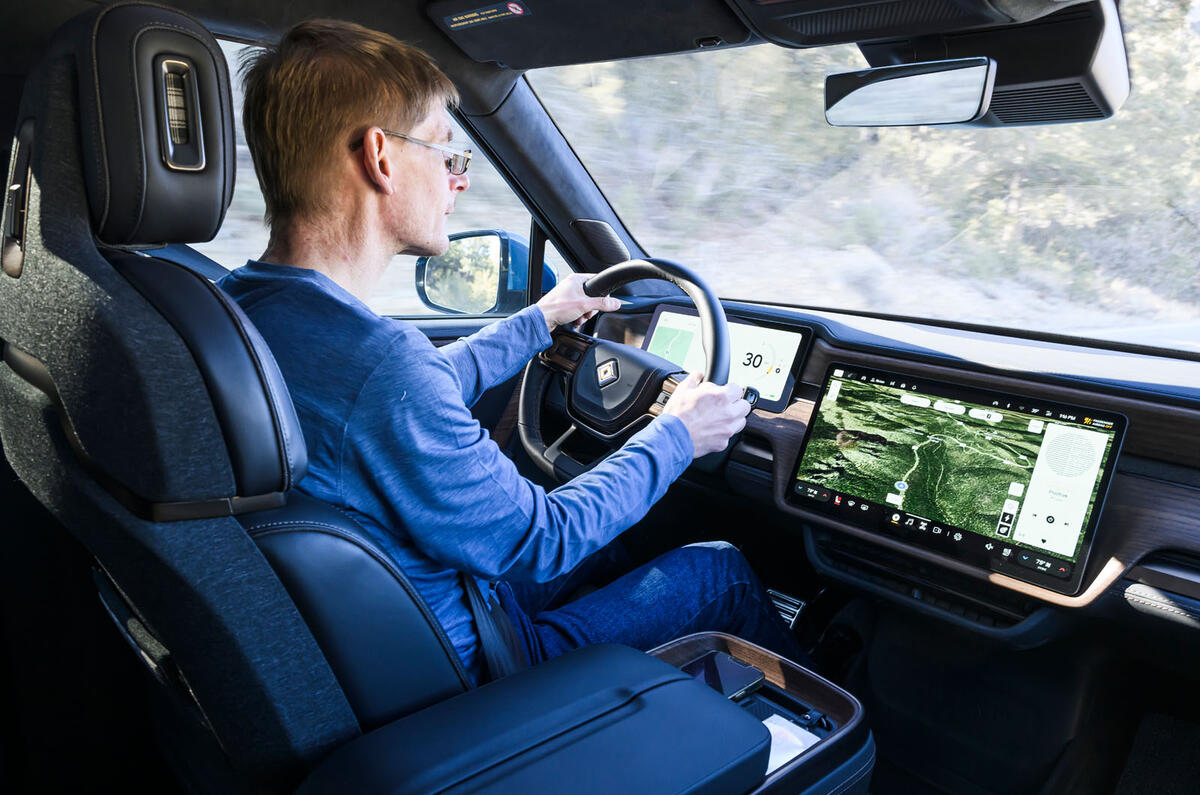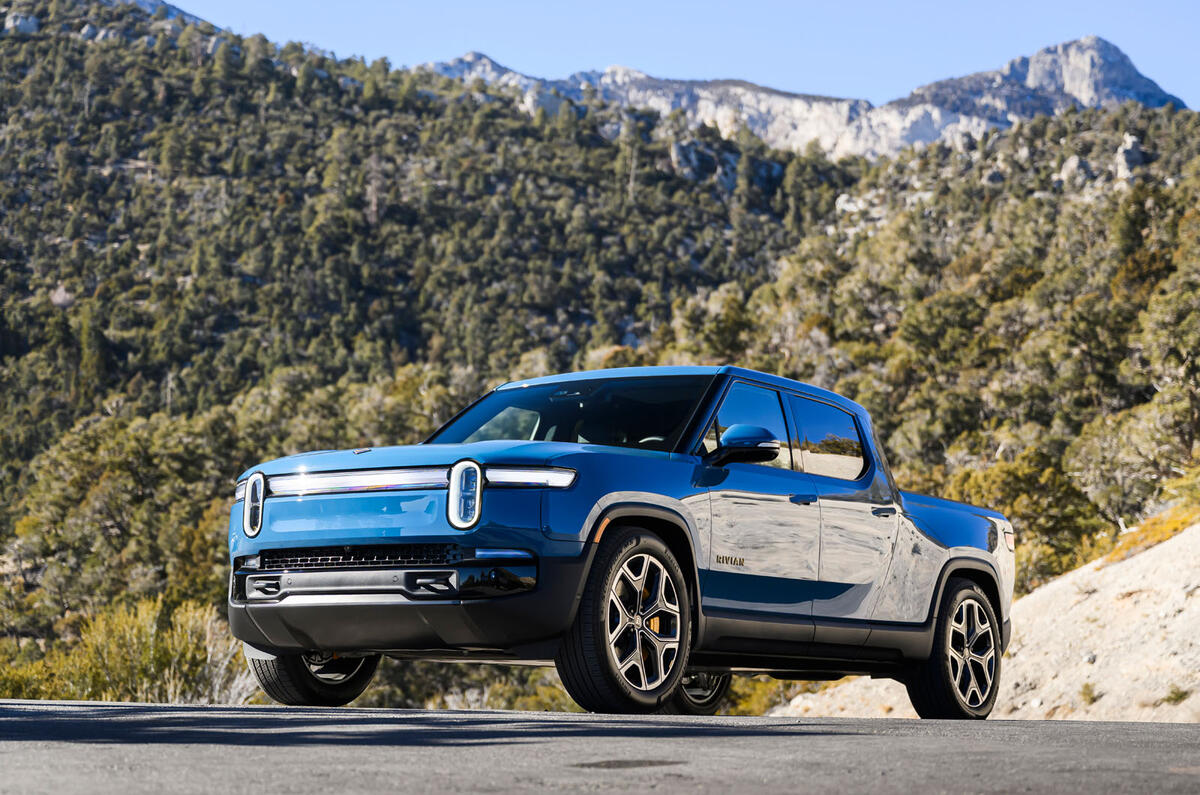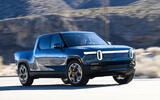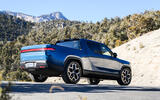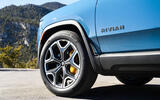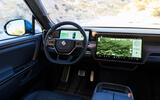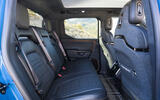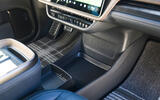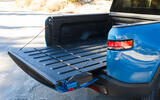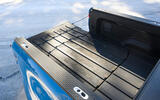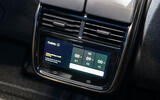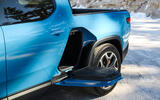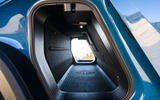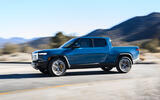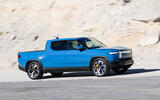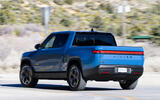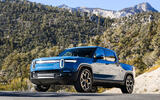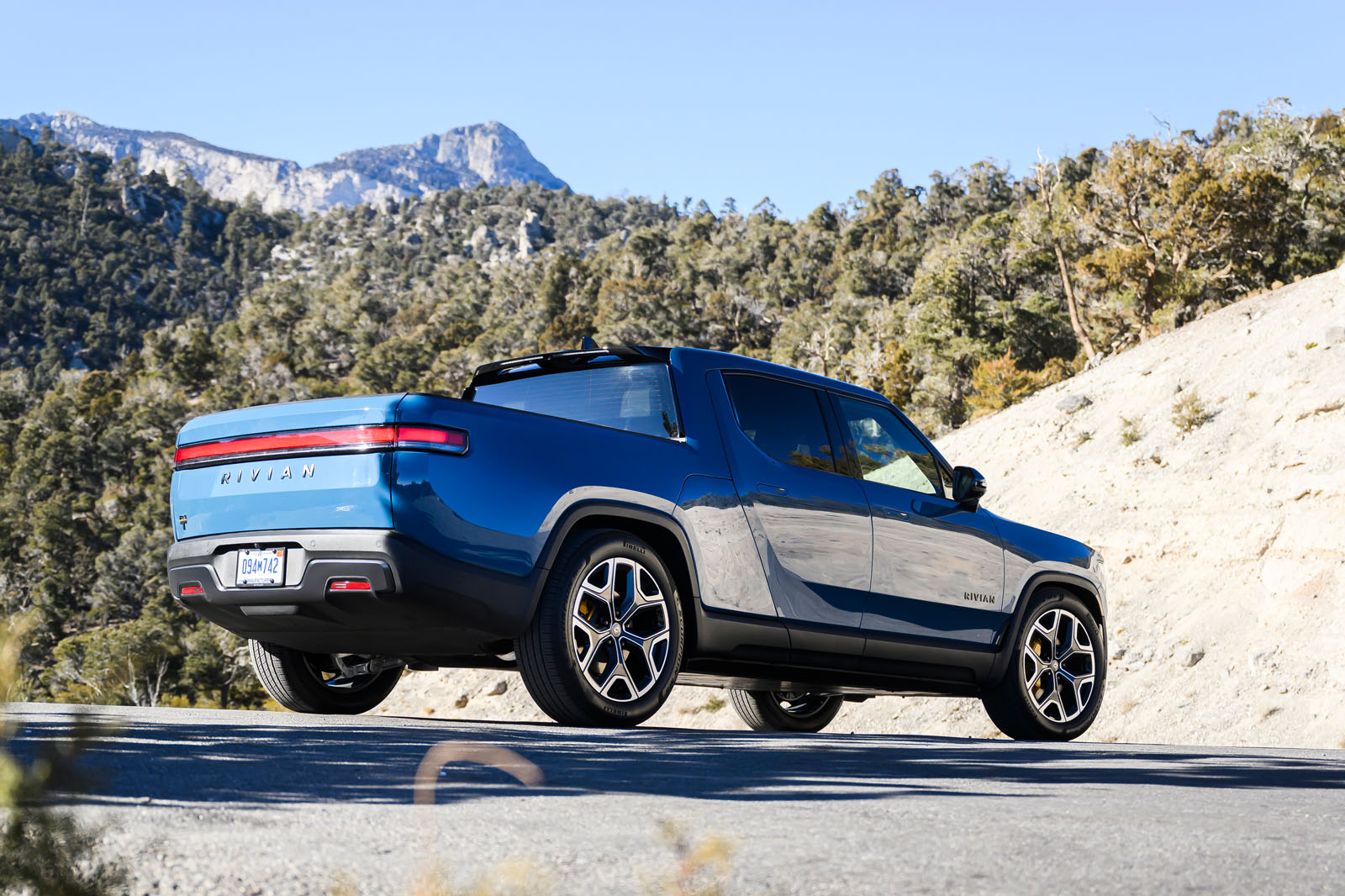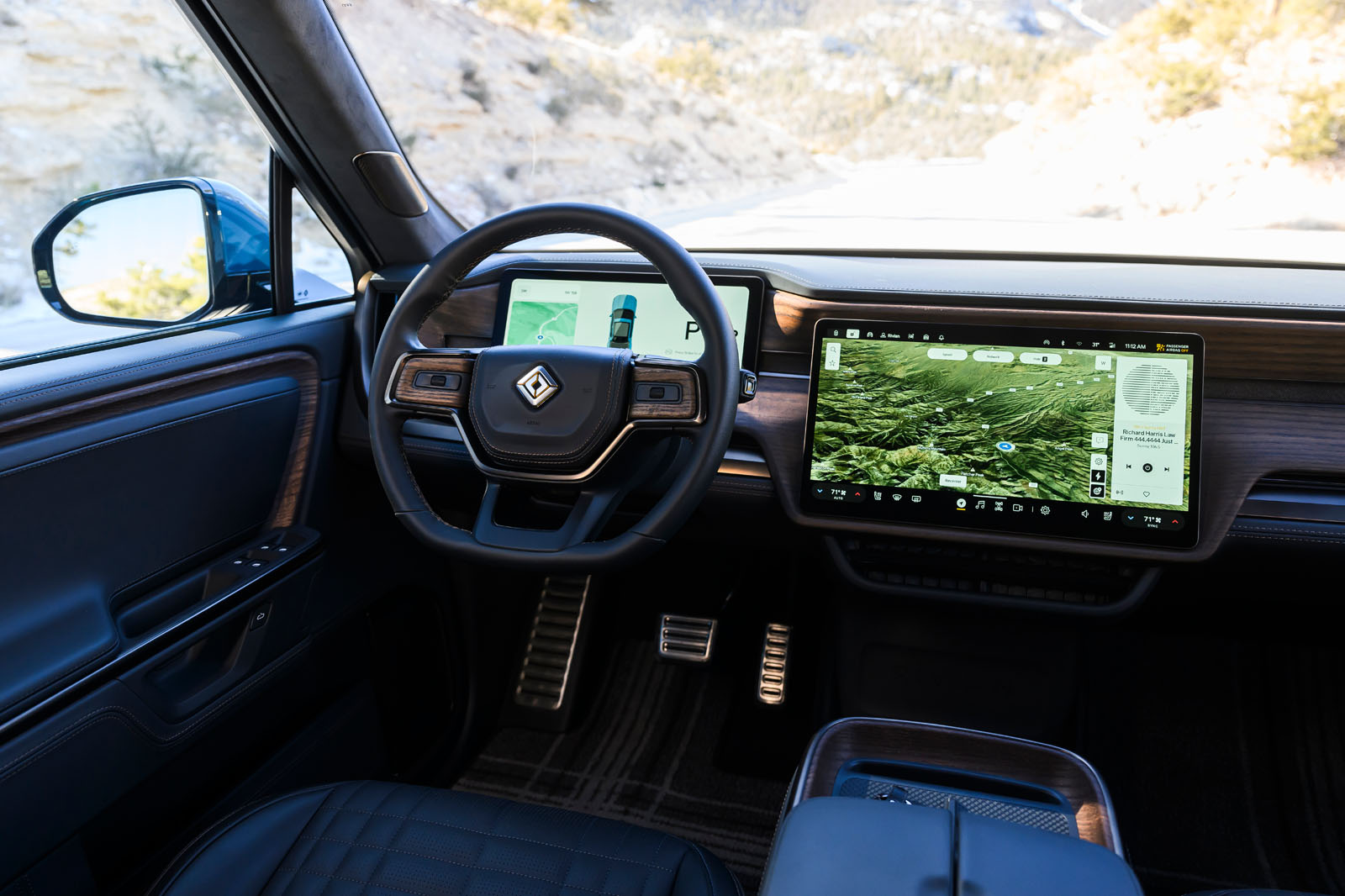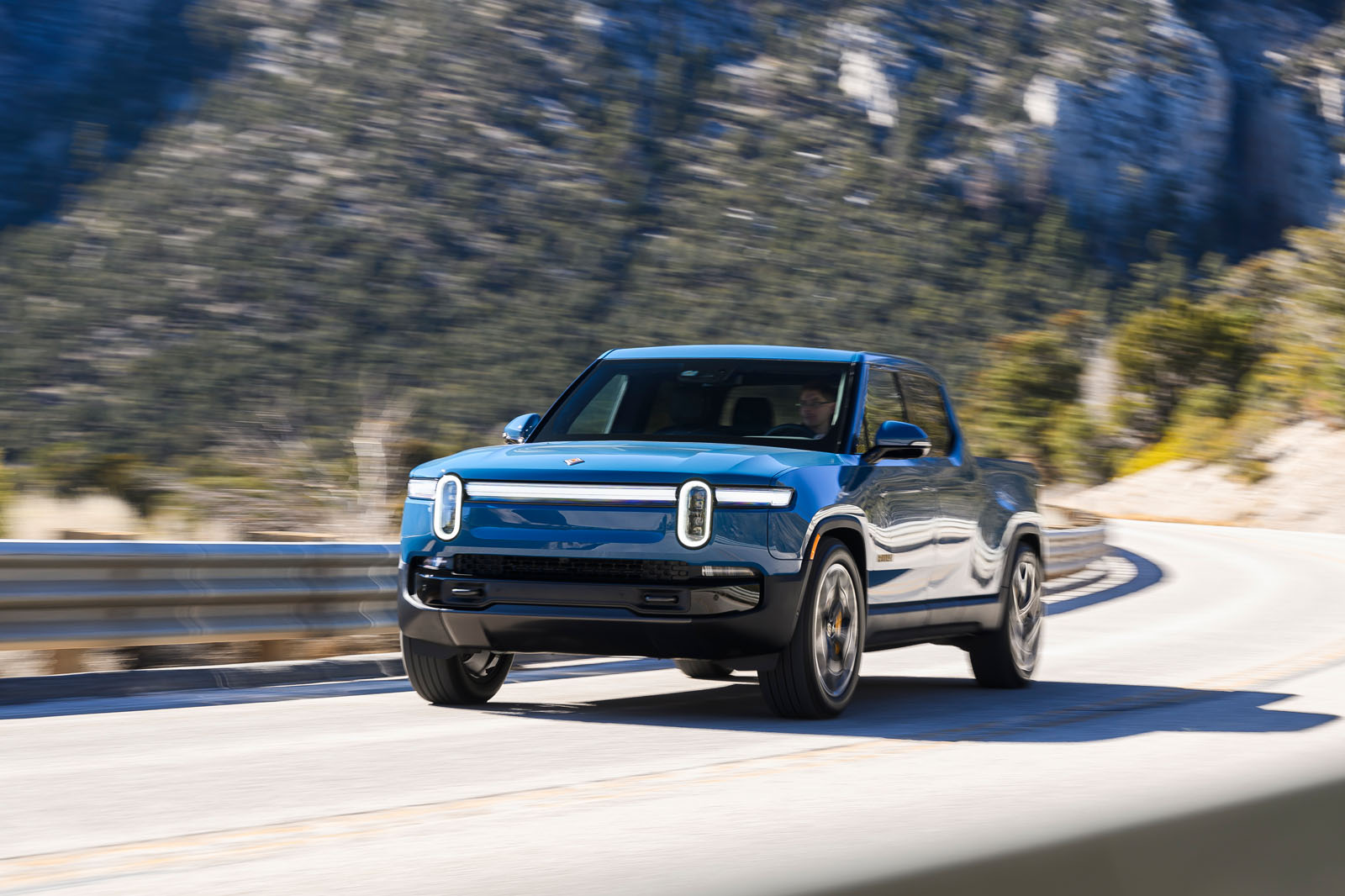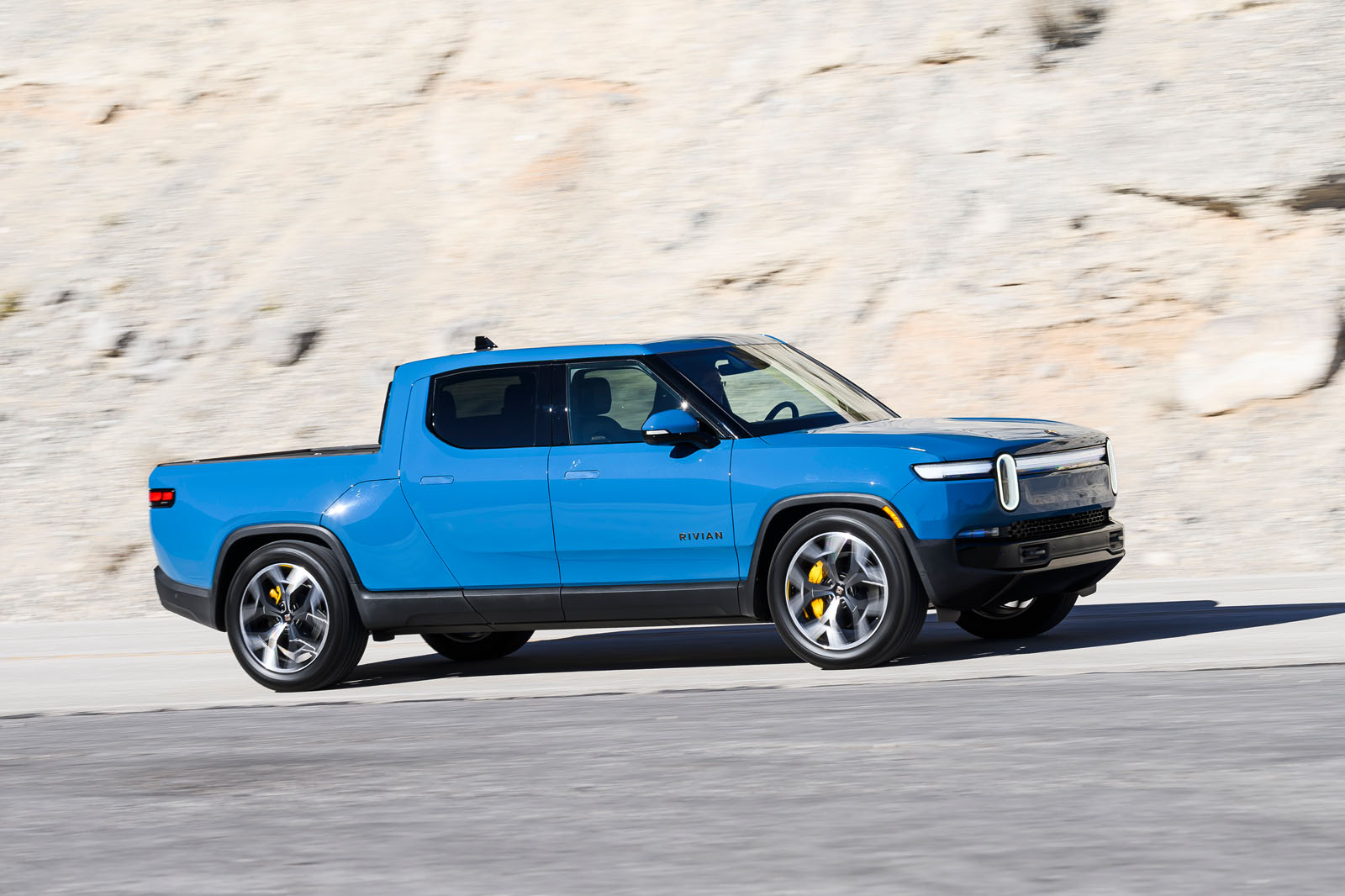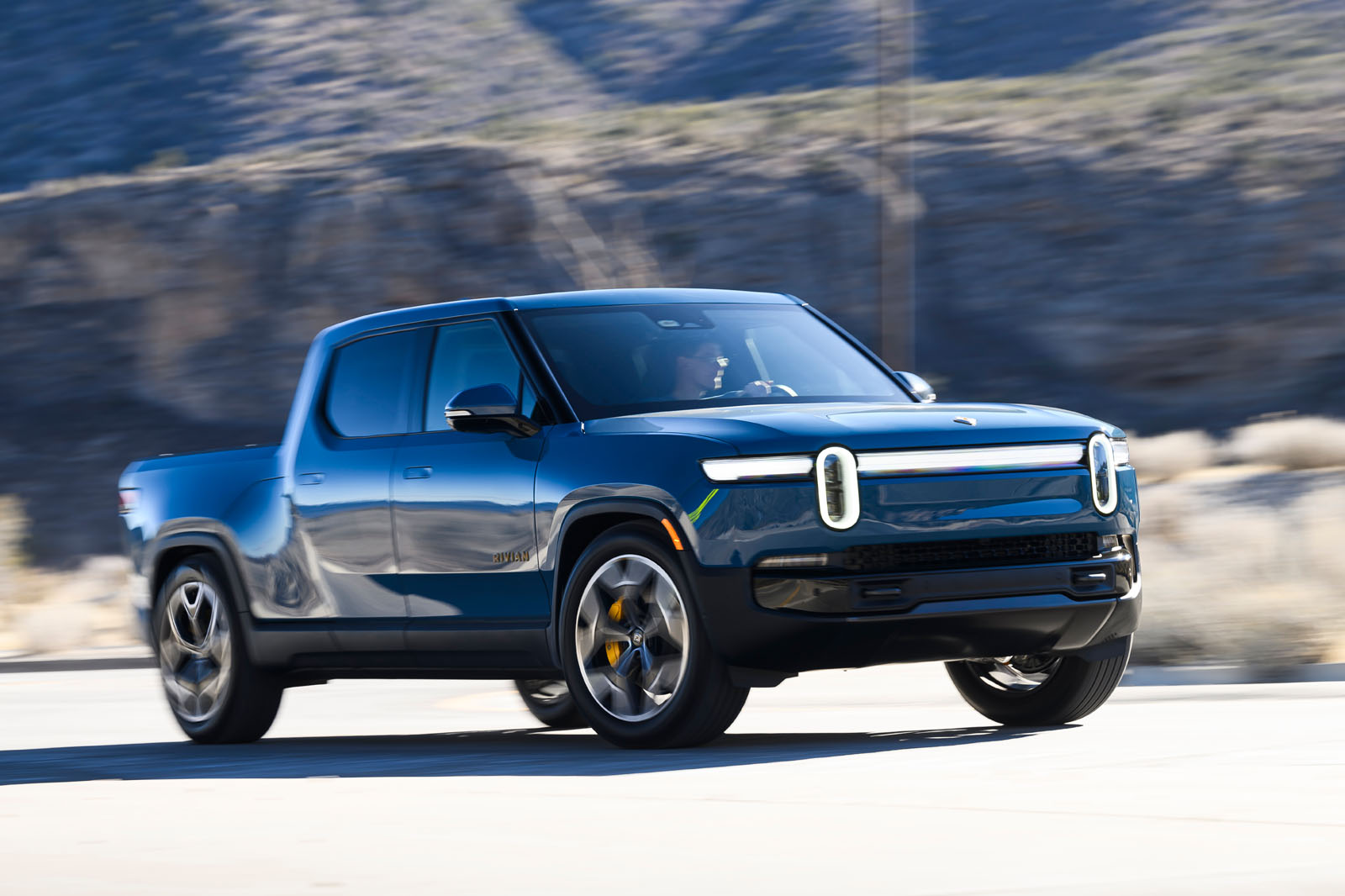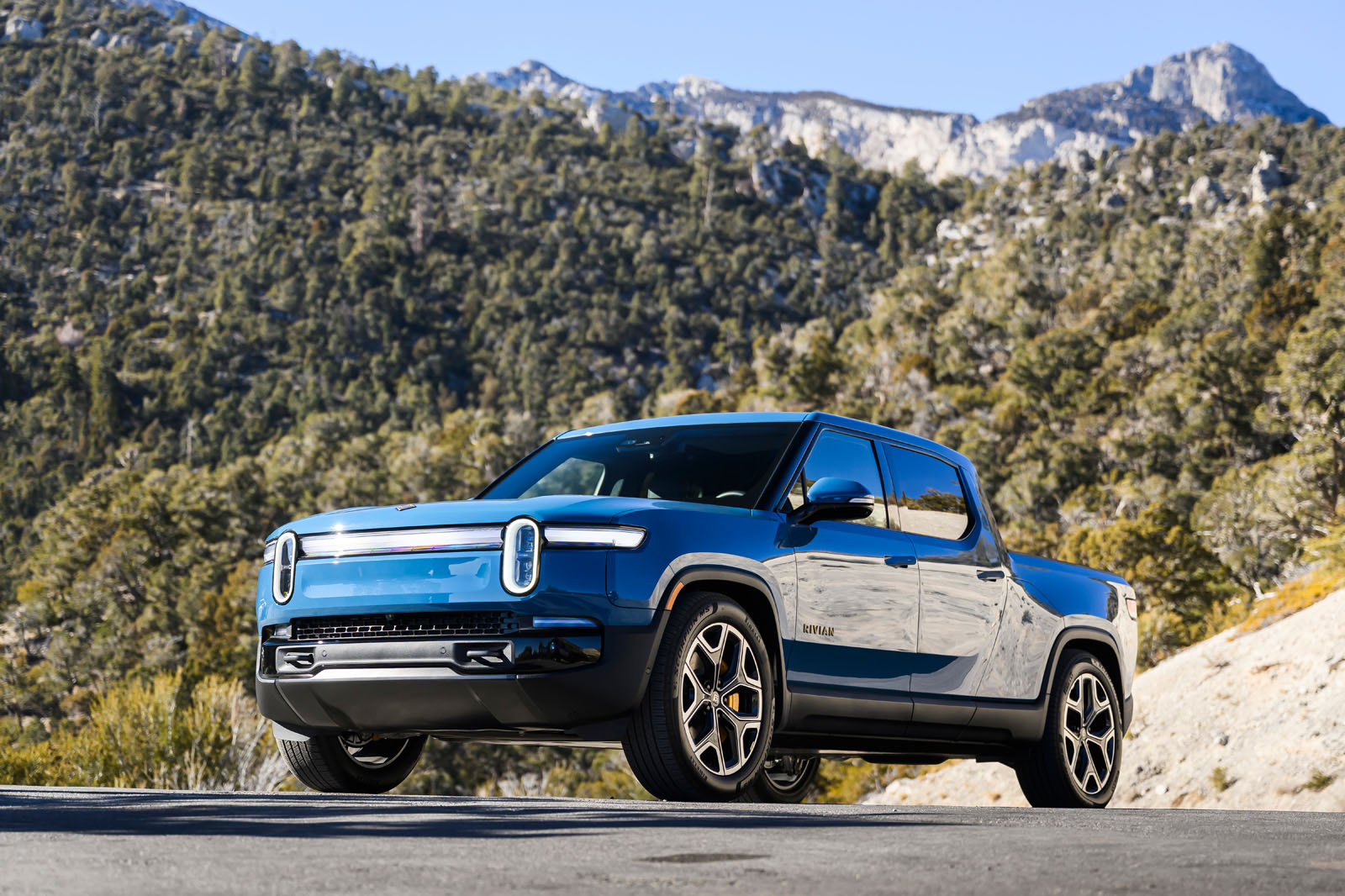Getting into the R1T provides a reminder of how digital this car is: you can use the phone app to lock and unlock the doors and control a lot of other key functions.
At one level, the interior has a Tesla-esque feel: there are minimal physical controls, with almost everything run through a big (15.6in) touchscreen, but it certainly doesn’t have the stark minimalism that Teslas are known for.
It’s actually a light and bright interior, helped by soft, natural-looking materials that give it a feeling of warmth. The ash wood-effect dash and door trim helps soften it, while there’s also deep plaid carpeting that, depending on your view, echoes either a Volkswagen Golf GTI or a 1970s chain hotel.
It’s plenty spacious inside and the upright driving position gives you a commanding view from the bolstered and comfy seats.
There’s a large central storage compartment up front, which is furnished with slide-out cupholders and the like.
The rear seats are a bit upright, but there’s good leg room, and rear passengers even get their own touchscreen to control some of the heating and other features.
Up front, the experience is dominated by that touchscreen, which is used for everything from controlling the infotainment, drive modes and security features to selecting the steering wheel and mirror adjusters.
Thankfully, there are multifunction physical toggles on the steering wheel – another similarity to Tesla – that are used for certain functions. For example, you use them to position the mirrors and wheel.
The infotainment system is genuinely among the slickest you will find, both in terms of functionality and visual splendour thanks to stylised comic book-style graphics. There’s a helpful row of shortcut buttons at the bottom to give access to key functions which are only ever a press or two away, and it’s a generally intuitive interface.
It also looks stunning, thanks to those graphics: you will find yourself cycling through the drive modes just to see all the arty pictures of the R1T in action on snow, mud, a race track and so on. And while they offer surface sheen, there’s plenty of depth: swipe across in off-road mode and you will be met with a wealth of information and dials on elevation, wheel angles, pitch, motor temperatures and more.
The system is fun too: the Gear Guard security mode (which, when activated, uses five external cameras to monitor and record events around your machine) introduced a friendly bear to watch over your belongings. He now appears on several other pages too.
Of course, your view will be shaped by your personal tolerance for touchscreens and, as ever, we would still prefer at least a few physical buttons to make things really easy and simple. And it’s worth noting that there’s no Android Auto or Apple CarPlay, although frankly the system is so good that you won’t really miss it that much.
It’s worth noting that upgraded infotainment will be offered to existing R1Ts via one of the firm’s regular over-the-air software updates, which perhaps hints while the styling changes are so subtle.
As two of the few true software-defined vehicles on the road, Rivians' vehicles are capable of being regularly updated with new features and other improvements, so the firm is still essentially working to make those cars better.


